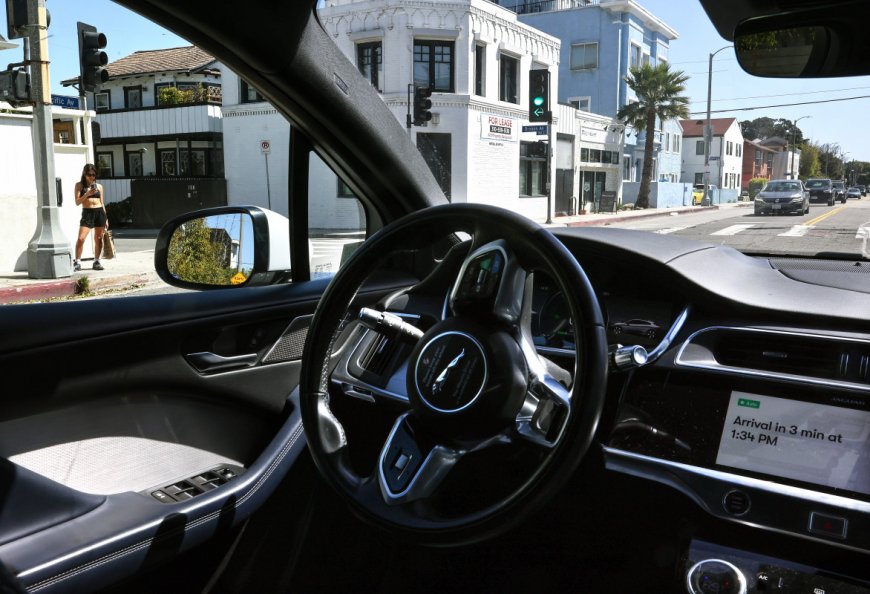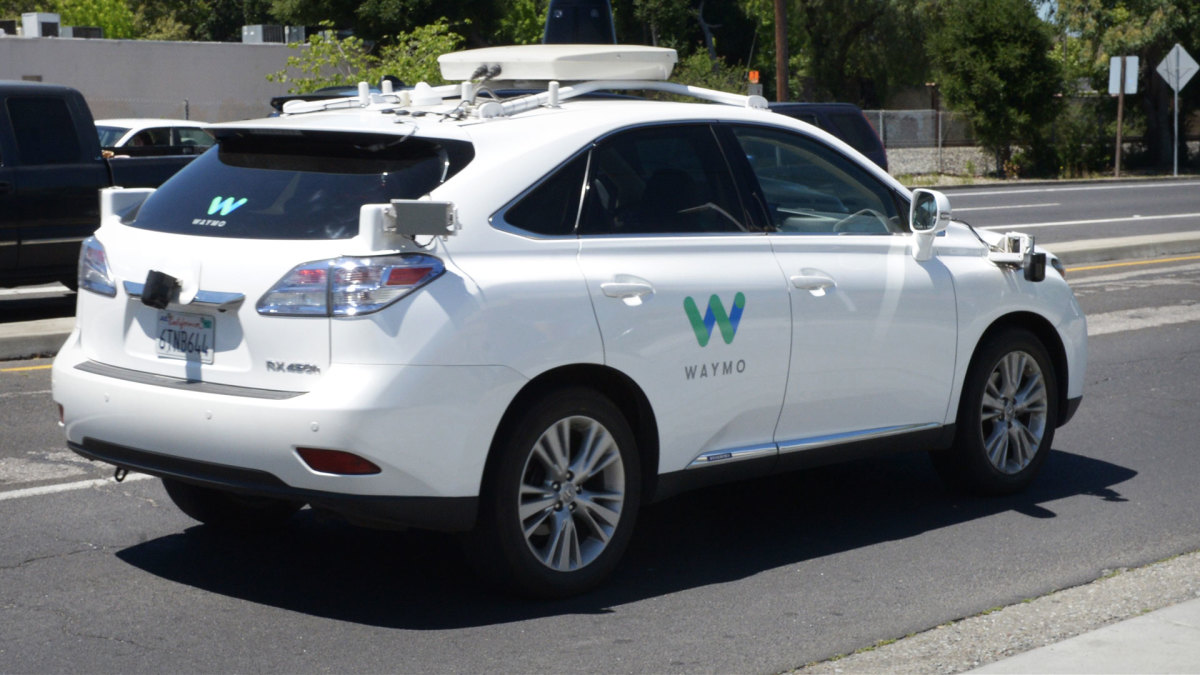Tesla isn’t as far ahead as you think in robotaxis
The autonomous taxi race has a surprising contender and speedbumps.

The message went out on April 5.
"Tesla Robotaxi unveil on 8/8," Tesla (TSLA) CEO Elon Musk wrote on X, formerly Twitter, the social media site that he owns.
Related: Elon Musk's Master Plan 4 sparks speculation by Tesla stock analysts
"I did partly pick it because 8/8 is a lucky number in China!" Musk said in a follow-up post. "Also, the birthday of my triplets, who are now 17."
Eight is indeed considered a lucky number in Chinese numerology, as it sounds similar to the verb meaning “to get rich,” so the more eights, the better.
Musk has been talking about a robotaxi service for years. During an investor call in 2019, Musk said Tesla expects to have 1 million vehicles on the road that can function as robotaxis.
Now, it looks like something will happen in August, although NBC News pointed out in April that regulatory agencies in California, Arizona, and Nevada had not heard from the company regarding its plans. Andrej Sokolow/picture alliance via Getty Images
Analyst says Robotaxi day 'key historical moment'
Earlier this month, after shareholders approved a long-delayed compensation package for Musk, Wedbush analyst Dan Ives, who has an outperform rating on the electric vehicle maker's shares with a $275 price target, said that "we believe the August 8th robotaxi day will be a key historical moment for the Tesla story that we see as a near-term catalyst,"
"We expect Tesla to show a robotaxi concept on Aug. 8 and perhaps an accompanying app, and to reveal more about its expected business model,” JPMorgan analyst Ryan Brinkman said earlier this month, according to Quartz. “But we do not expect material revenue generation likely for years to come.”
Related: Analysts reset Tesla stock price target ahead of Elon Musk's 'Master Plan 4'
Tesla's technology route relies mainly on visual perception, while other companies use a multi-sensor fusion approach.
While this is expected to reduce the cost of the autonomous driving system and increase the potential for mass production expansion, JPMorgan Chase said that relying solely on visual perception and abandoning sensors like LiDAR may not fully guarantee the system's reliability and safety, which would affect Robotaxi's development and regulatory approval.
Elon Musk's Tesla is hardly the only company looking to flag down the robotaxi business.
In China, Pony.ai and WeRide will reportedly start charging for trips using their self-driving taxi fleets between Beijing Daxing International Airport and the Yizhuang area.
And closer to home, there is Alphabet's (GOOGL) Waymo.
Formerly known as the Google Self-Driving Car Project, the Mountain View company said on June 25 that its autonomous ride-hailing service, Waymo One, is now available to everyone in San Francisco, nearly four years after a similar move in Phoenix, Arizona.
Waymo said that about 300,000 people had signed up to ride with Waymo since it first opened a waitlist in the city.
The company said on its website that before its Waymo Driver begins operating in a new area, Waymo maps out the territory “with incredible detail, from lane markers to stop signs to curbs and crosswalks.”
And, instead of relying solely on external data such as GPS which can lose signal strength, the Waymo Driver uses its detailed custom maps, matched with real-time sensor data, to determine its exact road location.
Bloomberg columnist Dave Lee was impressed with Waymo's progress. He shared his thoughts in January in a column entitled "Slow-and-Steady Waymo Is Winning the Self-Driving Race."
“Waymo is surely a reminder that, when dealing with extremely powerful technology, patience is a virtue — not just for the people who come into contact with it, but for the company’s long-term success,” he wrote.
Lee noted that Waymo “has consistently acted more slowly despite considerable pressure from outside investors wondering why, with all of its financial might, it wasn’t running rings around those competitors.”
The robotaxi business is a new frontier for companies, and it has proven to be wild and unpredictable.
General Motors’ (GM) Cruise autonomous vehicle unit announced on June 25 that former Amazon and Microsoft executive Marc Whitten is its new CEO, effective July 16.
Regulators turn up the pressure on robotaxis
Whitten was a founding engineer at Xbox and Xbox Live, and he came onboard nearly nine months after one of the Cruise's robotaxis dragged a pedestrian — who had just been struck by a vehicle driven by a human — across a street in San Francisco before coming to a stop.
Cruise CEO and co-founder Kyle Vogt stepped down following the incident.
More Tesla:
- Analysts reset Tesla stock outlooks after Musk’s $56 billion win
- Cathie Wood unveils surprising Tesla stock price target
- Analyst predicts Tesla's Elon Musk may create Apple rival
The incident sparked the California Department of Motor Vehicles to suspend the Cruise robotaxi service just two months after another state regulator, the Public Utilities Commission, approved an expansion that authorized around-the-clock rides throughout San Francisco.
And some members of the public have been less than thrilled with the presence of robotaxis on their streets.
There have been several attacks on robotaxis, including a Feb. 10 incident where a crowd of people near San Francisco's Chinatown vandalized and set fire to a Jaguar I-Pace electric SUV belonging to Waymo, leaving the driverless car to burn on the city streets amidst Lunar New Year celebrations.
In addition, regulators at the National Highway Traffic Safety Administration (NHTSA) are investigating the safety of various autonomous driving systems following more reported incidents involving the technology.
NHTSA's probe is looking into the performance of Waymo's automated driving system and its ability to avoid collisions, as well as its ability to detect and respond to traffic safety control devices such as cones, traffic lights, and traffic signs
The agency also concluded its investigation into Tesla and its Autopilot and Full Self-Driving system, where it found that the systems were not designed to keep the driver engaged with the actual task of driving.
NHTSA is also investigating Amazon-owned (AMZN) Zoox after two of its vehicles were involved in two separate incidents involving collisions with motorcycles, as well as BlueCruise, the semi-autonomous, hands-free driver assist found on a variety of Ford (F) vehicles such as its Mustang Mach-e electric crossover.
So will robotaxis be the norm any time soon?
Michael Everett, a Northeastern University assistant professor with joint appointments in the College of Engineering and Khoury College of Computer Sciences, told the Northeastern Global News there is still a long way to go before the technology is good enough to hit the mainstream market.
“The technology doesn’t seem there yet to me,” says Everett, who leads Northeastern University’s Autonomy and Intelligence Laboratory. “The reality is that these autonomous vehicles are still pretty specialized pieces of equipment.”
Everett added, "transparency is really important because these aren’t just like autonomous cars on some private test track where nothing can go wrong and everybody has agreed to accept the risk.”
Related: Veteran fund manager picks favorite stocks for 2024
What's Your Reaction?



























































